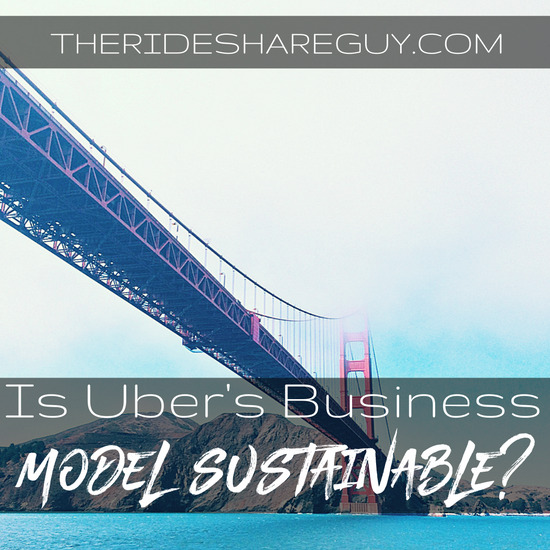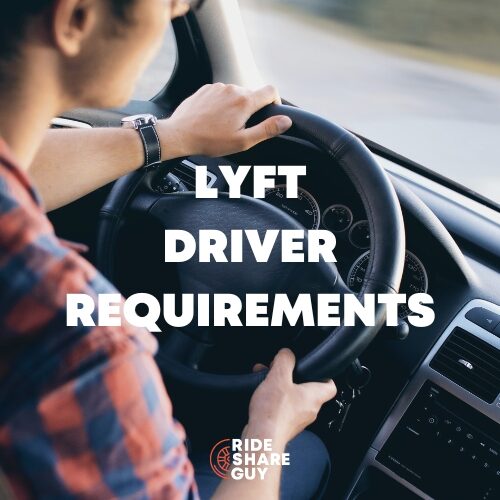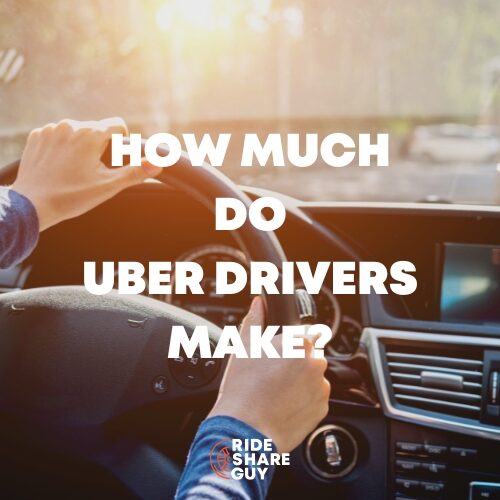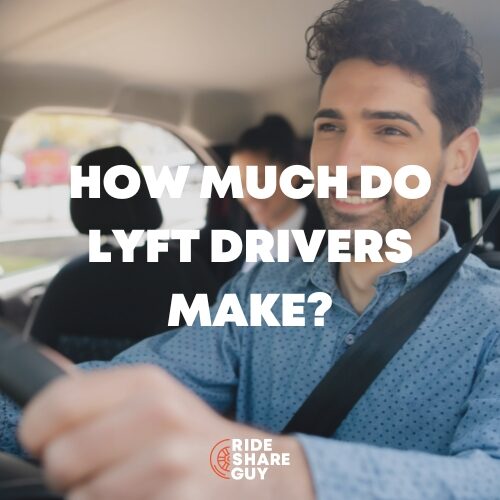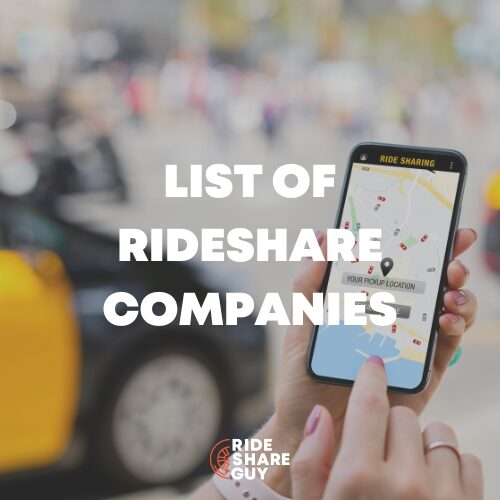Harry here. We talk a lot about the bonuses Uber offers new drivers and the guarantees dangled in front of existing drivers, but when you add in all the passenger subsidies too, you start to wonder how Uber ever plans to turn a profit. Today, senior RSG contributor John Ince takes a look at Uber’s business model and more importnatly how their quest for profitability might affect the bottom line for drivers.
Recently there have been a flurry of articles about Uber’s finances, and they’re all sniffing around the same question: Is Uber’s business model sustainable?
With good reason, this is the 69 billion dollar question. $69 billion just happens to be Uber’s valuation in its most recent funding round, making Uber the most valuable startup in the history of the world. Valuable, yes, but profitable? No, most emphatically no. According to figures obtained by Bloomberg, Uber last year lost more money – over $2 billion – than any startup in history. The question of sustainability is the real issue facing the company now, and there are arguments for each side, depending on your perspective.
From the driver’s perspective, since we’re the ones out there on the front lines of the battle, the price war between Uber, Lyft and taxis is looking increasingly suicidal. It’s difficult to see how anybody but the passenger wins in a world where a vital service is being provided at a fare at or below below the actual cost. Throw in overhead, research on driverless cars, regulatory battles, legal costs, executive compensation, driver bonuses, and marketing expenses, and it sure appears that the last one standing in this war will be the one with the biggest bank account and or lowest burn rate.
Many stories discuss how drivers are making less than minimum wage after accounting for all expenses. The hard analysis doesn’t even factor in the lurking questions of insurance, potential liability for transporting minors and any number of other issues that we’ve covered in this blog.
Rather than rehashing old numbers here, in this article I’m attempting to do something that happens too seldom in our increasingly specialized world. I’m attempting to synthesize perspectives that too often are viewed in isolation: the perspectives of the drivers, executives, passengers and investors. Uber needs all four of these to mesh seamlessly for the company to succeed over the long term. These four interests are like the legs of a four legged stool. Should any of these four legs be cut out from under the Uber (or Lyft) stool, the whole enterprise will topple over. Let’s dig in!
The Passenger’s Perspective – What Uber’s Got Going for Them
There are several factors working in Uber’s favor. First, the Uber brand has become widely accepted to the point where Uber, like Google, has become a verb. Second, passengers mostly love the Uber experience. Why wouldn’t they? They’re getting local transit service now at a fraction of the cost of a taxi, and much more conveniently than buses or subways.
Related Video: How to use the Uber passenger app
Most passengers, however, are not aware this situation can’t continue, as fares are currently being subsidized out of the pool of investor capital that Uber has raised – over $13 billion worth. Third, Uber has won regulatory battles that by any measure are impressive, often by mobilizing passenger sentiments. But they’ve come at a great cost to the company, again draining company coffers and making a lot of enemies along the way.
In sum, from the passenger’s perspective, there are plausible reasons to believe that Uber’s business model is sustainable.
The Executive’s Perspective – Offering a Better Value Proposition
Let’s look at this analysis as an Uber executive. Clearly there is money to be made in transporting people from point A to point B, otherwise taxis would not have been there for Uber to disrupt in the first place. But taxis aren’t the only other option for passengers who want to get from point A to point B. Riders also can take the bus, or the subway, or – remember this – actually walk or ride a bike or drive their own car if they have one.
So for all the hype around Uber and Lyft (and the the Juno’s, Tesla’s Google X) the key thing to remember for Uber execs is that Uber has to continually prove its worth by offering a significantly better value proposition than the alternatives. However, the situation is fluid. Transport options are always changing. Passenger preferences one year may not translate to revenues for Uber and Lyft the next year, and Uber’s dominance in one market may not translate into dominance in another market.
Uber executives know this, and that’s one reason why they’ve kept cutting fares – to the point where a rideshare ride now costs approximately one third of what it cost four years ago.
Executive Concern – Razor Thin Margins
The microeconomics of ridesharing are not forgiving to the losers – just ask taxi drivers. Margins are razor thin in this business. To put this another way, if Uber can’t make money on individual rides, then no levels of growth are going to help them on their Profit & Loss statements.
If the microeconomics don’t work, then Uber’s impressive growth rates are just digging the company into a bigger financial hole. The fact that Uber lost over $2 billion in fiscal year 2015 is pretty clear evidence they’ve already dug themselves in pretty deep. Yes, they’ve raised a ton of money from investors, but that only begs the question: is Uber’s business model sustainable? Even if Uber can close another funding round, which is looking increasingly unlikely, that would only postpone the eventual reckoning. In the vernacular of the Street, Uber executives short term goal is simple – they must convince investors they’re not throwing good money after bad.
The Investor’s Perspective – The Elusive Path To Profitability
If investors want to, then they can believe in the future of ridesharing. They can believe driverless cars will come sooner than later and put Uber on the path to profitability. This is at least what some investors have convinced themselves of. Remember, most investors are thrilled with their Uber investments so far because they put their money in at much lower valuations. On paper at least, they’ve made a ton of money on their Uber investment – so far.
Investors certainly want to believe Uber’s eventual IPO will enable them to cash out. Uber’s aggressive push toward driverless cars adds yet another measure of plausibility to the hope that Uber will be able to turn the corner to profitability in the near future. But I suspect very few of these investors understand the real world problems drivers encounter, the real frustrations of the job, the unfavorable economics, the churn issue and other factors that I will expand upon shortly.
Investor Concerns – The Huddle
One generally assumes that since investors are, by and large, very rich people, they must be very smart with their money. Surely they wouldn’t be tossing money at Uber if they hadn’t done their homework. But recently I had a conversation with one of those early investors in Uber, and I pressed him on how much he and other investors really know about Uber’s finances. His response was telling. “It’s a huddle,” he said, “Uber is very close with their numbers.”
This point was made in the recent series on Naked Capitalism where the author wrote, “Tellingly, earlier this month, Bloomberg reported that JP Morgan and Deutsche Bank turned down the “opportunity” to sell Uber shares to high-net-worth individuals. The reason? The taxi ride company provided 290 pages of verbiage, but would not provide its net income or even annual revenues.”
Does Uber have something to hide from investors? Is this the reason their IPO just keeps getting pushed further and further off into the future? Is there something going on here that really doesn’t make sense financially? Hard questions need to be asked. Unless Uber (and Lyft) can somehow demonstrate that their business model works, then as soon as investors wise up and stop throwing good money after bad, then Uber (and Lyft’s) days as the darlings of the startup world could be numbered.
The Driver’s Perspective – The Huge Elephant in the Room
For all that Uber has accomplished, there’s still that huge elephant standing over there in the corner of the room: the questionable microeconomics of the ridesharing business. Any serious analysis of Uber’s business model needs to take a deep dive into numbers behind each individual ride and the economics of being a driver. On this score, it turns out that drivers may know a lot more about the future of Uber than some of these Tesla-driving investors who feel they were lucky to get in on Uber’s early financing round. Because drivers are right there, where the rubber meets the the road, and they’re privy to gold nuggets of information that hold the key to Uber’s future.
What drivers know about the microeconomics should give anyone who invests great concern. Drivers know that without bonuses and guarantees, most of them would have stopped driving long ago. Drivers are the ones who decide whether or not to turn on the app. And if drivers don’t turn on the app and start picking up passengers, Uber is up the proverbial creek.
Price Wars, Bonuses and Guarantees
Yes, Uber is in an all out price war with taxis and Lyft. Uber understands this and it’s part of their overall corporate strategy. Their goal is to put competitors out of business, but until that point they need to keep their drivers on the road, so they sweeten the pot with so-called Power Driver Bonuses and guarantees. The terms vary from week to week, but in general, drivers are incentivized to stay on the road with various bonuses such as getting an extra $500 if they do 120 rides in a week. Other drivers – part timers like myself – may opt instead for hourly guarantees that promise $30 or $40 or even $50 an hour if you meet certain conditions, like accepting 90% of your trip requests and completing one or two trips an hour depending on your location.
Now remember these guarantees are in effect no matter the level of demand. I remember waiting for ride requests on a Friday evening last summer working on a $35/hr guarantee. I could see on the Uber passenger app that close to a dozen other drivers were sitting in their cars waiting for ride requests within a radius of a few miles – many, if not all, also working on some kind of guarantee. Uber is making no money as we sit in our cars, and the company is on the hook for $35/hour multiplied by the number of drivers.
Doing a little quick math, in my immediate vicinity, Uber is shelling out close to $480/hour so that, should demand spike, the passengers would be afforded the quick pickups they’ve come to expect and demand from Uber. Uber can afford this kind of driver/passenger subsidy because they’ve raised $13 billion from investors. This kind of microeconomics explains pretty clearly how Uber could be losing money at a $2 billion / year clip. Those numbers, however, should not be comforting to either existing investors or anyone who might be considering investing in Uber in the future.
The Bottom Line
How much longer can this continue? The answer is simple: it can continue until Uber runs out of investor capital or until they start turning a profit which, from the looks of things, could be much longer than investors may be willing to wait.
Readers, what do you think about Uber’s business model and is it sustainable?
-John @ RSG
